
Orthodontics
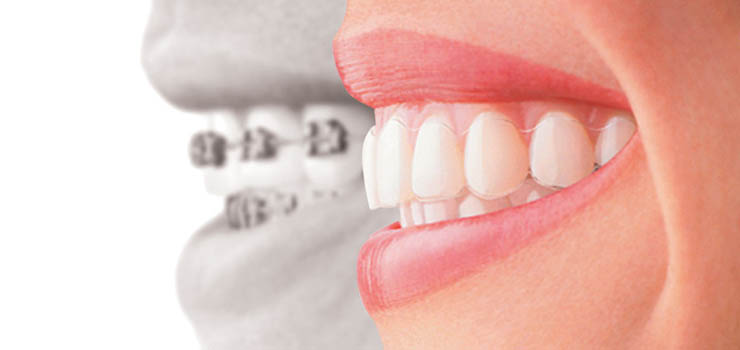
Orthodontics is a correction of orthodontic anomalies in children and adults.
Correction of orthodontic anomalies in children and adults is especially important for functional reasons. It allows better chewing function and creates conditions for smooth oral hygiene maintenance. Also, prevents excessive wear of dental tissue, tooth injuries, periodontal disease, and tooth loss. Of course, aesthetic reasons should not be forgotten.
A clinical examination and analysis of models, images, and photographs are required to make a therapy plan. Orthodontics deals with the aesthetics of the patient’s face, so all these parameters should be considered when planning further treatment.
Even at an early age is possible to diagnose some orthodontic anomalies, so a visit to the orthodontist is advised as early as possible (no later than age 7). Although there is no age limit for orthodontic treatment, some irregularities can be easily corrected in younger patients, especially during growth. Also, advises on nutrition and correcting bad habits (tongue thrusting, mouth breathing issues, thumb sucking). Exercises to activate specific muscle groups and selective teeth grinding to eliminate forced bites. As well as creating a space holder in case of premature tooth loss, fall into the prevention and early treatment methods of orthodontic anomalies.
Mobile (movable) appliances
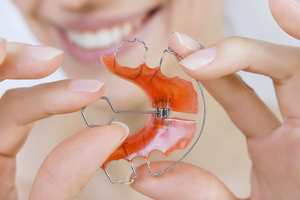 Mobile appliances, better known as mobile dentures, can be active (for spreading the jaw and correcting the position of one or a group of teeth) and functional (for correcting the relationship between the upper and lower jaw during the period of intense growth). Patients wear mobile appliances at night and over the day (as much as possible), and for the success of the therapy, good cooperation with the patient is required. To motivate children to carry these appliances, they are made in various colors and cheerful applications, according to their wishes. Controls are performed for 4-6 weeks.
Mobile appliances, better known as mobile dentures, can be active (for spreading the jaw and correcting the position of one or a group of teeth) and functional (for correcting the relationship between the upper and lower jaw during the period of intense growth). Patients wear mobile appliances at night and over the day (as much as possible), and for the success of the therapy, good cooperation with the patient is required. To motivate children to carry these appliances, they are made in various colors and cheerful applications, according to their wishes. Controls are performed for 4-6 weeks.
It should be noted that mobile appliances very often serve as preparation for a patient for therapy with fixed appliances.
Fixed appliances
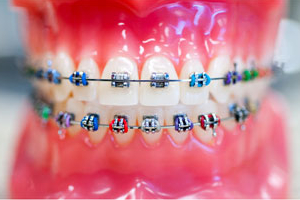 Fixed appliances, also known as fixed prostheses, allow treatment of many irregularities in teeth position and bites. Some of them are therapy of dental crowding, a diastema, and correction of the position of buck (protruding) teeth. Also, therapy of bite irregularities uses intermaxillary traction (elastics) or camouflage. Use of traction to pull the impacted teeth (often the canines), correction of deep bite, open bite, and crossbite, closing the space created by the teeth removal, pre-prosthetic orthodontic preparation…
Fixed appliances, also known as fixed prostheses, allow treatment of many irregularities in teeth position and bites. Some of them are therapy of dental crowding, a diastema, and correction of the position of buck (protruding) teeth. Also, therapy of bite irregularities uses intermaxillary traction (elastics) or camouflage. Use of traction to pull the impacted teeth (often the canines), correction of deep bite, open bite, and crossbite, closing the space created by the teeth removal, pre-prosthetic orthodontic preparation…
The setting of the fixed appliance is a painless procedure, “gluing” brackets to the teeth and their interconnection with the archwire, which will do the tooth movement. Sometimes, apart from these elements, additional elements are set.
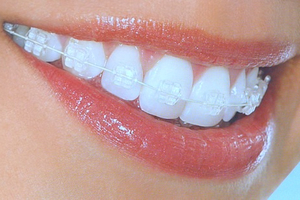 In addition to classic metal brackets, mini metal brackets can also be used (considerably smaller dimensions), self-locking brackets, lingual brackets (placed on the inside of the tooth), esthetic brackets (made of monocrystalline sapphire glass, ceramics, or plastic materials). A large selection of esthetic brackets, arches, rubber ligatures, and additional tooth-colored elements today provide minimal visibility of fixed appliances, which is especially important to adolescents and patients of certain occupations. Fixed appliance controls are performed every 2-6 weeks. After the end of the therapy, it is necessary to maintain the achieved results by applying foil or fixed retainers (fixed on the inside of the tooth).
In addition to classic metal brackets, mini metal brackets can also be used (considerably smaller dimensions), self-locking brackets, lingual brackets (placed on the inside of the tooth), esthetic brackets (made of monocrystalline sapphire glass, ceramics, or plastic materials). A large selection of esthetic brackets, arches, rubber ligatures, and additional tooth-colored elements today provide minimal visibility of fixed appliances, which is especially important to adolescents and patients of certain occupations. Fixed appliance controls are performed every 2-6 weeks. After the end of the therapy, it is necessary to maintain the achieved results by applying foil or fixed retainers (fixed on the inside of the tooth).
It should be emphasized that regular oral hygiene is of great importance for patients with fixed appliances. Using special brushes, floss, and antiseptic mouthwashes will prevent the appearance of caries and gum inflammation in places that are hardly accessible for cleaning.
When is it necessary to extract (remove) the teeth for orthodontic reasons?
When the analysis shows a great lack of room for permanent teeth, then it is approached to the removal of some permanent teeth. These are mostly the first premolars, but there are also exceptions when other premolars or first molars are extracted. The decision on which teeth will be extracted is made by an orthodontist based on an individual therapy plan. As well as the assessments of teeth condition (big fillings, endodontically treated teeth, teeth with present chronic bone lesions).
Sometimes a great lack of space can be diagnosed very early (in the period of multiple dentitions). So the serial extractions provide space for permanent teeth’ smooth emergence. Tooth extraction is also an integral part of the treatment with camouflage in adult patients, in which growth has been completed. Still, it is necessary to correct irregularities of the bite. Of course, more significant irregularities in the bite require combined orthodontic-surgical therapy.
Tooth correction foils
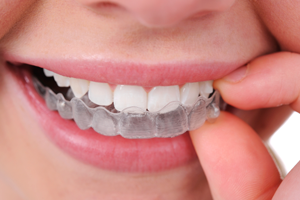 Thanks to the progress of 3D technology in dentistry, scanning of tooth and tooth models is possible. These models, based on the previous therapy plan, are produced by a series of foils. Each of these performs a gradual shift and correction of the teeth. The duration of therapy and the number of necessary foils for achieving the desired results depends on the degree of expression of an anomaly. The advantage of this technique is that these foils are almost not seen on the teeth, and maintaining oral hygiene is greatly facilitated because the patient can remove them alone. About the possibilities of this method of treatment for each individual case, review and consultation with the orthodontist is mandatory.
Thanks to the progress of 3D technology in dentistry, scanning of tooth and tooth models is possible. These models, based on the previous therapy plan, are produced by a series of foils. Each of these performs a gradual shift and correction of the teeth. The duration of therapy and the number of necessary foils for achieving the desired results depends on the degree of expression of an anomaly. The advantage of this technique is that these foils are almost not seen on the teeth, and maintaining oral hygiene is greatly facilitated because the patient can remove them alone. About the possibilities of this method of treatment for each individual case, review and consultation with the orthodontist is mandatory.
